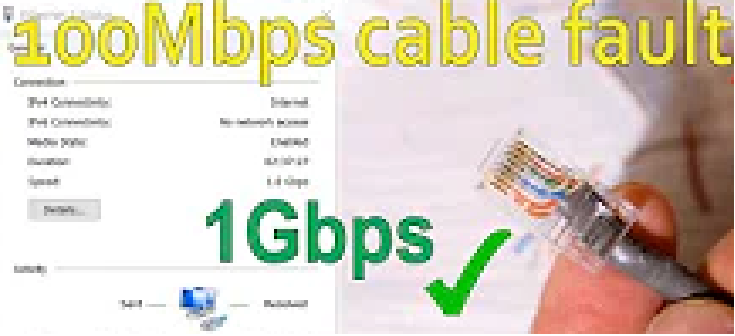
Not Getting Gigabit Ethernet speeds
In less than a decade we went from using megabyte speeds to now much faster gigabyte speeds.
After two years of excruciating hard-work, you finally able to get a gigabyte connection. The ISP personnel gets to your home and sets up the gigabyte connection. But after plugging your ethernet cable the first thing you notice is that instead of the promised 1000 megabytes your network speed caps at something much lower than that.
So why does it happen and what can you do to solve it?
Here in this article, we will tell you a few reasons and their solutions
- Check your speed
Checking your speed is vital. You can do that through a site or you can check it from your computer settings.
Follow these steps to check your internet speed from the computer settings
- Look for the search and click on it. When it opens up search for Control Panel and open it.
- After you open the control panel, search through every single setting until you locate the setting called Network and internet, double click the setting.
- Opening network and internet will show you the setting Network and Sharing Center. You will see a few options below the Network and sharing center setting, click on the first one called View network status and tasks.
- Below a line of text that reads, ‘view your basic network information and set up a connection,’ you will see the name of your ethernet connection. Click on it.
- A setting box will pop up on your screen and inside that box, you will be able to see your network speed.
- Faulty cable
Now that you have confirmed low gigabyte speed on your computer the first thing you need to do is check your ethernet cable. Most of the time a faulty cable is the cause of this problem.
Pull the ethernet cable out of the LAN port and put it back in, you should hear a click when the cable is plugged back inside.
Another issue with your ethernet cable can be loose wires. Slightly pull the individual cables and see if some of them are loose. The loose connection will come right off. Reinsert the cable properly.
- A CAT 5 cable
Your ethernet cable has text printed on its surface. Read it and see if your cable is CAT 5. If it is, change it to 5e, 6, or 7 CAT cable. The CAT 5 ethernet cable does not support gigabyte speeds.
- Gigabyte switch/router
Make sure your hardware equipment supports gigabyte speeds because sometimes even the router supplied by your ISP may not support gigabyte speeds. Even your computer network interface card should be gigabyte compatible.
- Auto Negotiation
Auto Negotiation is an adapter-setting that can be enabled. Enabling it might get your network speed to normal. You can select Auto Negotiation by following these steps:
- Look for the search and click on it. When it opens up search for Control Panel and open it.
- After you open the control panel, search through every single setting until you locate the setting called Network and internet, double click the setting.
- Opening network and internet will show you the setting Network and Sharing Center. You will see a few options below the network and sharing center setting, click on the first one called View network status and tasks.
- Within the list of settings on the left, you will see a setting called Change adapter settings. Select it.
- Right-click the ethernet connection and select properties. A box will pop up and within that box, you will see the option called configure. Open it.
- After selecting Configure, go into the advanced tab and from the list of properties select Speed & Duplex. Change Value to Auto Negotiation and click OK.